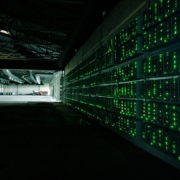Thermodynamic Roots of Economics
by Herman Daly
The first and second laws of thermodynamics should also be called the first and second laws of economics. Why? Because without them there would be no scarcity, and without scarcity, no economics. Consider the first law: If we could create useful energy and matter as we needed it, as well as destroy waste matter and energy as it got in our way, we would have superabundant sources and sinks, no depletion, no pollution, and more of everything we want without having to find a place for stuff we don’t want. The first law rules out this direct abolition of scarcity. But consider the second law: Even without creation and destruction of matter-energy, we might indirectly abolish scarcity if only we could use the same matter-energy over and over again for the same purposes—perfect recycling. But the second law rules that out. And if one thinks that time is the ultimate scarce resource, well, the entropy law is time’s irreversible arrow in the physical world. So it is that scarcity and economics have deep roots in the physical world, as well as deep psychic roots in our wants and desires.
Economists have paid much attention to the psychic roots of value (e.g., diminishing marginal utility), but not so much to the physical roots. Generally, they have assumed that the biophysical world is so large relative to its economic subsystem that the physical constraints (the laws of thermodynamics and ecological interdependence) are not binding. But they are always binding to some degree and become very limiting as the scale of the economy becomes large relative to the containing biophysical system. Therefore attention to thermodynamic constraints on the economy, indeed to the entropic nature of the economic process, is now critical — as emphasized by Nicholas Georgescu-Roegen in his magisterial The Entropy Law and the Economic Process (1971).
Why has his profound contribution been so roundly ignored for forty years? Because as limits to economic growth become more binding, the economists who made their reputations by pushing economic growth as panacea become uncomfortable. Indeed, were basic growth limits recognized, very many very prestigious economists would be seen to have been very wrong about some very basic issues for a very long time. Important economists, like most people, resist being proved wrong. They even bolster their threatened prestige with such pretension as “the Sveriges Riksbank Prize in Economic Science in Memory of Alfred Nobel” — which by journalistic contraction becomes, “the Nobel Prize in Economics,” infringing on the prestige of real science, like physics. Yet it is only by ignoring the most basic laws of physics that growth economics has endured. Honoring the worthy contributions of economists should not require such flummery.
I once asked Georgescu-Roegen why the “MIT-Harvard mafia” (his term) never cited his book. He replied with a Romanian proverb to the effect that, “in the house of the condemned one does not mention the prosecutor.”
 Herman Daly is CASSE’s Chief Economist, Professor Emeritus (University of Maryland), and past World Bank senior economist.
Herman Daly is CASSE’s Chief Economist, Professor Emeritus (University of Maryland), and past World Bank senior economist.



Dear Herman,
There is an expression, “sorry my piece is so long, I did not have time to make it shorter.”
Thank you (again), for your succinct clarity of thought, expressed with an economy of words! We will do our best to push them out…
Alas, now you are fielding the very question you asked your mentor, from disciples like me…
Best regards,
John
I just went over some of Georgescu-Roegen’s work as I had not really seen it before — toying with the intersection of economics and physics, especially thermodynamics, is a bit of a hobby of mine.
A retrospective of his work he wrote in the mid 1980s comes up at:
http://college.holycross.edu/RePEc/eej/Archive/Volume12/V12N1P3_25.pdf
He seems to do a reasonably good job of writing some mostly true (if banal) statements about thermodynamics, but in the end his ideas come across to me as a bit daft. With respect to thermodynamics, he does not seem to write from a solid foundation. (An early ‘tell’ for me was that he doesn’t seem to deal in terms of free energies, which encompass entropy and govern may ideas of mass and energy flows). After only a page or two he is musing/arguing such junk as:
“It is an elementary fact, I submit, that matter also exists in two states, available and unavailable, and that, just like energy, it degrades continuously [a]nd irrevocably from the former to the latter state. Matter, like energy, dissipates into dust, as is best illustrated by rust, by wear and tear of motors of automobile tires.”
(I gave up after that one.)
The connections he makes between his take on entropy/thermodynamics and economics seems more or less to boil down to asserting that it is so. This core seems to be dressed up with lots of not-necessarily-wrong references to old dead guys and a scattering of mathematical definitions and expressions.
My conclusion: He may have been ignored for academic political reasons, but that doesn’t make him right.
There’s much more clear thinking out there on these topics.
Dear Herman,
about 10 years ago I sent you a little booklet that used lots of your ideas called “My first little book of Ecological Economics”. You wrote back with a very kind note. I just wanted to say how much your work has meant to me, and to many other people. Bravo!! I think we have fundamentally missed the chance to retain a habitable planet, but I might be wrong, so I had better keep going…
All best wishes to you
Marc Hudson
How does all of this relate to Classical Political Economic theories on Land Value Taxation aka Resource Rent / Ricardo’s Law?
You had me through the first paragraph — there are indeed interesting similarities between the laws of thermodynamics and some basic concepts of economics. After that though, the analogy just stopped making sense.
The true part: scarcity will always exist. By our very nature as humans we desire more than we can possibly have, and even if we had everything the time to enjoy it is limited. Scarcity is a fact of life.
The false part: this makes growth unsustainable, or not a desirable long-term goal (as Mr. Daly seems to suggest). Growth is ultimately built on the mutually beneficial nature of trade, which allows us to make the most of limited time and resources available. There are “entropic” factors, such as transaction costs, uncertainty in information, government intervention, and so on… but that’s where the physics analogy ends. Unlike inanimate objects, human beings have the capacity for reason and thought. That’s what makes innovation, new technology, and all the other good things which lead to growth possible.
Basically, Mr. Daly is thrashing a straw-man. No influential economists have claimed growth means “an end to scarcity.” Resources are by definition scarce; growth just signifies we are using those resources in increasingly productive ways, and finding ways to make previously useless items into new resources. That’s how growth is sustained.
I agree with MSM’s conclusion: “[Georgescu-Roegen] may have been ignored for academic political reasons, but that doesn’t make him right. There’s much more clear thinking out there on these topics.”
The first law of thermodynamics is conservation of energy only. Conservation of mass and energy is in Einstein’s Special Theory of Relativity, E=mc^2. If you just take energy, the limit is the rate of energy arriving from the Sun. Fossil fuels are stored energy from the sun. Nuclear energy is from E=mc^2.
Any economics book that does not define wealth in the first chapter and this definition of wealth should sustain life, is not worth reading. So far i have not seen any economics book that does this…..
Hi Prof. Daly,
Fantastic for me to find your blog here. I think your philosophical reflections on the thermodynamic laws to be interesting, read your collection in Beyond Growth with great interest, and am finding your text with Josh Farley to be simply holy though I have a ways to go yet in it.
Nevertheless, I think your philosophizing is unnecessarily disconnected from real world alternatives that illumine the important issues you raise. As a result, you leave a sense of despair I find.
Simple realities support your basic points, including the UNEP 2009 Year Book. As for immense sources of energy in ways which minimize sink impacts, we do have them in solar, wind, and biomass. I have just completed a work involving research of the development of the wind industry, but including the benefits of distributed generation/residential generation. Consider Mauenheim, Germany for example, Thisted, Denmark, or Navarre, Spain to name a few.
Meanwhile, emissions from fossil fuels are pumping the atmosphere full of the greenhouse gases that amplify the First Law’s basic point, conservation of energy and matter. Climate change glacial melting and the impacts of disappearing water sources and rising sea levels are the anticipated severe consequences in this system. Waste from nuclear power is no less a challenge since it does not magically disappear, again because of your basic point about the first law.
As for the second law on entropic energy flows, fossil fuels and nuclear waste produce wastes that can’t be recycled. Renewable energy hybrid systems avoid the entropic issues in the release of massive amounts of GHGs. In the case of biomass, it becomes carbon neutral if ecological systems are sustained. Ecological systems thus are an “innovation” of sorts, though basically by returning to common sense.
While the Harvard-MIT Mafia may largely ignore ecological realities, I would suggest it’s for reasons parallel to the bubble which has surrounded most polluting industries, from mining to petroleum. In other words, they have friends in high places. That’s a hard nut to crack, but from the 2008 crash to the 2005 Millenium Ecosystem Assessment, 2007 IPCC report, and 2009 UNEP Year Book, the green industries and environmentally and socially responsible business strategies are laying important groundworks. Michael Conroy is an economist who wrote Branded about certifications while Jared Diamond the biologist and ex-WWF wrote Collapse with similar discussions.
There are too many real world correlates to the problems and solutions implicit in your work, Prof. Daly. I’m eager to help illuminate those interconnections.
tap into solar energy flows in solar, wind, and biomass, and in the case of biomass relate to the biological cycles which take form an important demonstration of conservation principles in carbon neutrality. ,
Unfashonomic states that no economicists have equated growth with an end to scarcity. The point made by Herman Daly in Beyond Growth, for example, and Jonathan Harris in a paper of his at the Tufts’ Global Development and Environment Institute concerns claims related to Hartwick’s Rule, which states that substitutibility between man-made capital and natural capital. That is, why worry about scarcity and the end of mineral or fossil fuel resources since our human technological ingenuity will always create alternatives?
One basic problem of such views is they demonstrate a compartamentalized philosophy that does not acknowledge limits of any kind, along with the various dimensions of ecological economics and whole cost accounting laid out so well by Herman Daly and others. Recycling for example, is a fundamental practice that acknowledges the costs of waste disposal and the pollution involved in the extraction of minerals. See Jared Diamond’s Collapse for an excellent discussion of mineral extraction, and the Publish What You Pay Coalition for non-profits concerned with other social dimensions as well.